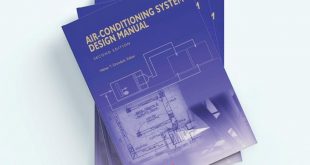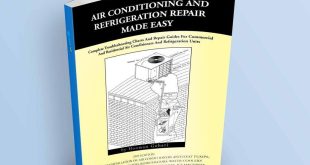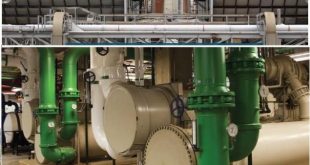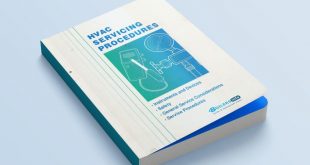Audel HVAC Fundamentals: Heating Systems, Furnaces, and Boilers Volume-1
Heating, Ventilation, and Air Conditioning (HVAC) systems are essential in providing comfortable living and working environments. This comprehensive guide covers the fundamentals of heating systems, furnaces, and boilers, along with key considerations in system selection, insulation, and career opportunities.

Introduction
HVAC systems are designed to maintain indoor comfort by controlling temperature, humidity, and air quality. These systems consist of various components including heating systems, ventilation, and air conditioning. Understanding the fundamentals is critical for both homeowners and professionals.
Heating and Ventilating Systems
Heating systems generate warmth, which is distributed throughout buildings using air, water, or steam. Ventilation ensures a continuous supply of fresh air while removing indoor pollutants. Properly designed ventilation maintains indoor air quality and prevents condensation and mold.
Air Conditioning
Air conditioning provides cooling and humidity control. Modern systems combine heating and cooling into single units, offering year-round comfort. The selection of an appropriate HVAC system depends on climate, building design, and usage patterns.
Selecting a Suitable HVAC System
Choosing the right HVAC system involves evaluating heating and cooling loads, energy efficiency, and cost. Systems must be sized correctly to ensure comfort and efficiency. Industry standards such as Manual J are used for precise sizing.
Career Opportunities in HVAC
The HVAC industry offers various career paths including installation, maintenance, system design, energy auditing, and sales. Skilled technicians are in high demand as systems become more advanced and energy-efficient.
Condensation, Vapor Retarders, and Air Barriers
Controlling moisture is essential in building design. Vapor retarders and air barriers prevent moisture infiltration, reducing the risk of mold and structural damage. Proper insulation complements these elements by maintaining thermal performance.
Insulating Materials and Practices
Different types of insulation are used to enhance energy efficiency:
- Rigid Insulation Board: Provides high thermal resistance.
- Reflective Insulation: Reduces radiant heat transfer.
- Batt and Blanket Insulation: Common in residential construction.
- Loose-Fill and Blown-In Insulation: Ideal for attics and hard-to-reach spaces.
- Foam Insulation: Offers air-sealing and high R-values.
Building Construction and Insulation
Building materials and construction methods impact HVAC performance. Insulating walls, floors, ceilings, and roofs is vital to minimizing heat loss. Windows and doors must also be energy-efficient to maintain thermal comfort.
Sizing Residential Heating and Air Conditioning Systems
Accurate sizing is crucial to system performance. Rule-of-thumb methods provide rough estimates, while advanced calculations use coefficients of heat transmission, temperature differences, and infiltration rates to determine heating and cooling loads.
Heating Fuels
Various fuels are used in heating systems:
- Natural Gas: Common in urban areas.
- LPG and Fuel Oils: Used in rural settings.
- Coal, Wood, and Biomass: Renewable options.
Each fuel type has distinct efficiency, cost, and environmental considerations.
Warm-Air Heating Systems
Warm-air systems distribute heat via ductwork. Options include gravity systems, forced-air systems, and perimeter-loop designs. Proper duct sizing, balancing, and control components are essential for optimal performance.
Hydronic Heating Systems
Hydronic systems use water as the heat-transfer medium. They include hot-water boilers, radiant panel heating, and combination systems. Advantages include uniform heat and design flexibility, while disadvantages involve higher installation costs.
Steam Heating Systems
Steam heating is traditional but still in use, especially in older buildings. Systems include one-pipe and two-pipe configurations, vapor systems, and vacuum systems. Key components include boilers, steam traps, and piping networks.
Electric Heating Systems
Electric heating options include baseboard heaters, radiant panels, and heat pumps. They offer ease of installation and low maintenance but may result in higher operational costs depending on electricity rates.
Furnace Fundamentals
Furnaces heat air for distribution through ducts. Types include upflow, downflow, and horizontal models. Components such as burners, blowers, controls, and heat exchangers must be maintained regularly for efficiency and safety.
Gas Furnaces
Gas furnaces are widely used for their efficiency and reliability. High-efficiency models with electronic ignition and advanced controls are increasingly popular. Proper installation, ventilation, and maintenance ensure safe operation.
Boilers and Steam Systems
Boilers heat water or produce steam for space heating. Efficiency, fuel type, and sizing are key considerations. Steam systems require careful design of piping, venting, and condensate management.
Insulation and Moisture Control
Effective insulation and moisture control enhance HVAC efficiency. Choosing the right materials and ensuring airtight construction prevents heat loss and condensation issues.
Conclusion & 📚⬇️
Understanding HVAC fundamentals is essential for system selection, installation, and maintenance. With advancements in technology and increasing demand for energy efficiency, the HVAC industry presents numerous opportunities for professionals and businesses. Proper design, insulation, and system maintenance are key to achieving optimal indoor comfort and energy savings.
 Boilersinfo Boiler and Mechanical Power Digital Library
Boilersinfo Boiler and Mechanical Power Digital Library





